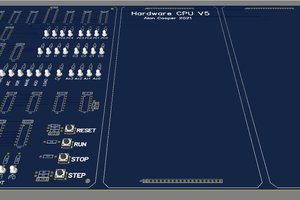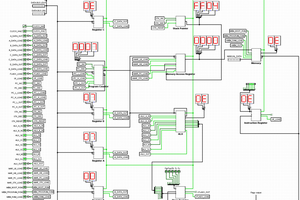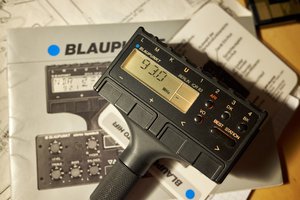Working with mondern tools and vintage chips I am looking into the use of AMD's 2900 family of chips. The plans are to extend this knowledge into the design of bit sliced computers.
The first part of this will be to access the functionality of the AM2901 4 bit slice ALU. This 40 pin dip chip contains the ALU section of a CPU. This chips are designed to work together so you can extend the size of the ALU 4 bits at a time. In the documentation notes on setting up 64 bit ALUs. When using multiple slices carry operations can be sped up using AM2902 look a head carry chip. This is the same as what can be done with 74X181 ALUs.
Internally 16 four bit words of dual port ram. This ram is accessed by addressing it through the A and B ports of the chip. A 1 word scratch pad register Q. A one word data in port and a one word output port.
There are Up/Down shift functions avalible for RAM and the Q register. A strange quirk of the shifter is that you can shift the RAM address Or The RAM and the Q register.
Read more »


 agp.cooper
agp.cooper
 Ruud van Falier
Ruud van Falier
 Anders Dinsen
Anders Dinsen
 6502Nerd
6502Nerd
For 8 bit instructions, you do not need a microstore with 8 address lines and 12 data lines. The idea is to "decode" portions of the instruction to drive the 2901 directly. For example, divide the 8 bit instruction into three fields: 4 bits for opcode, 2 bits for register 1 select and 2 bits for register 2 select. The 4 bit opcode is wired to microstore address lines. Each of the register fields are wired to the 2901 register fields. The microstore drives the rest of the 2901 signals directly. The net result is a smaller, narrower microstore.